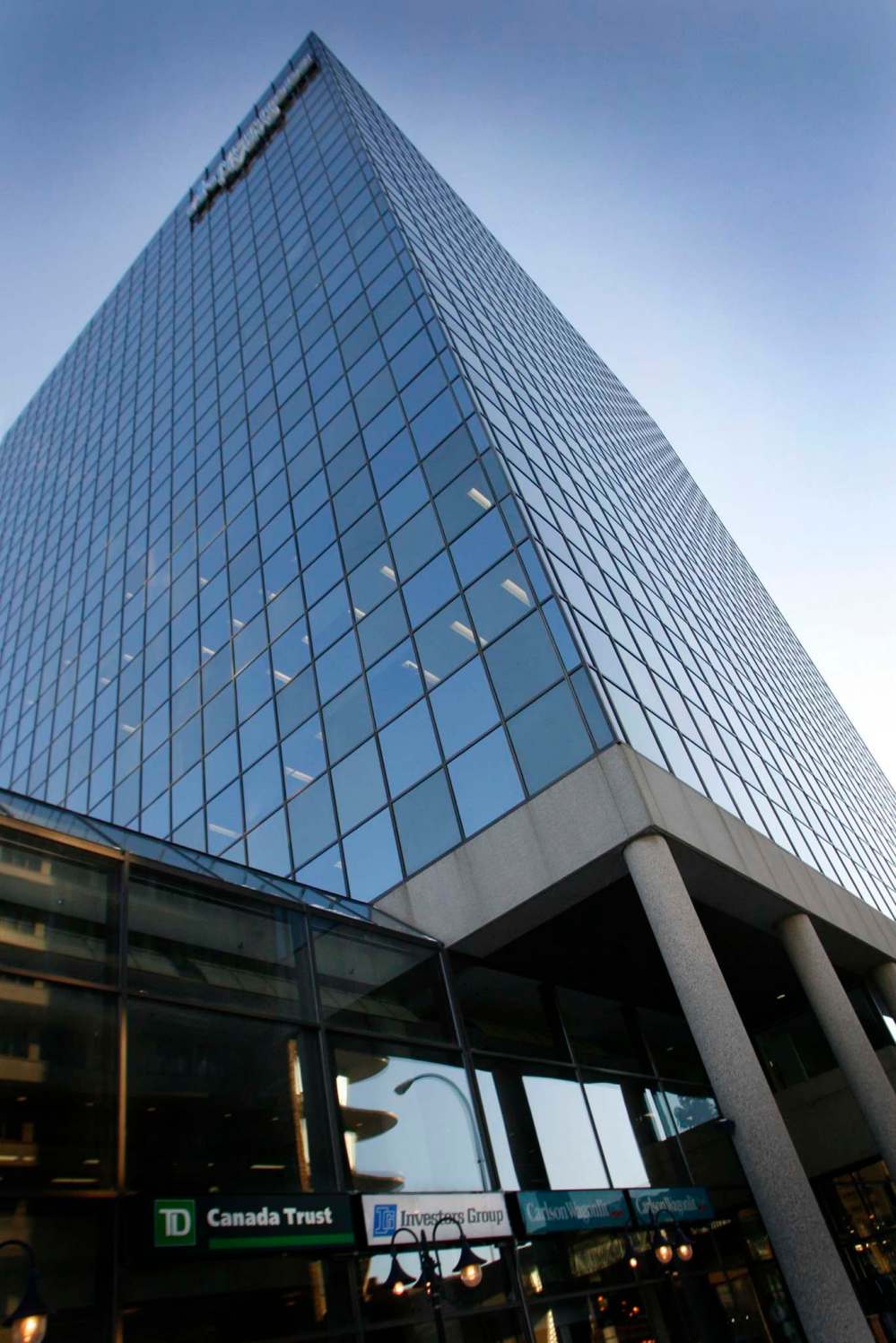Optimism despite vacancy
Unoccupied downtown offices at new high, but numbers don't tell whole story
Advertisement
Read this article for free:
or
Already have an account? Log in here »
To continue reading, please subscribe:
Monthly Digital Subscription
$1 per week for 24 weeks*
- Enjoy unlimited reading on winnipegfreepress.com
- Read the E-Edition, our digital replica newspaper
- Access News Break, our award-winning app
- Play interactive puzzles
*Billed as $4 plus GST every four weeks. Offer only available to new and qualified returning subscribers. Cancel any time.
Read unlimited articles for free today:
or
Already have an account? Log in here »
Hey there, time traveller!
This article was published 27/09/2021 (1254 days ago), so information in it may no longer be current.
The downtown office vacancy rate in Winnipeg reached 14.6 per cent in the third quarter of 2021, a new high that brings the city’s rate closer to the national 15.5 per cent.
It’s a considerable leap, though a significant portion of the increase is attributable to a single shift in the market, says CBRE vice-president Paul Kornelsen.
“In the Winnipeg office market, things can be shaken by one or two big users making a decision,” Kornelsen said, speaking with the Free Press about his company’s third-quarter office and industrial real estate report.

“The big drop comes from a reduction of 120,000 square-feet by a national insurance company,” he added. That shift muted the impact of over 70,000 square-feet of new office space coming onto the market, and helped push the city’s Class A vacancy rate to “uncharted territory” at 14.3 per cent. An amount of space that large returning to the market is not a frequent occurrence, Kornelsen said, estimating it may happen every five to 10 years.
That insurance company, the Free Press learned, is Canada Life Assurance Company, which saw its lease expire on a significant amount of space at 444 St. Mary Ave.
But Kornelsen said the numbers don’t tell the entire story when it comes to the city’s urban office market. In fact, there’s an overwhelming sentiment of optimism downtown, even as some statistics seem pessimistic. People are returning to the office, or wanting to, and there’s been a general uptick in touring activity across all classes of the office market, Kornelsen said. Plus, the visual evidence — feet on the sidewalks, cars on the road — shows a downtown looking less and less like the ghost town of the early pandemic.
And while the downtown vacancy rate rises, driven by new supply and over 300,000 square-feet which has been returned to the market by corporate consolidation of space, there’s a flip side beneficial to potential tenants, Kornelsen said. High vacancy gives “more options than ever” to consider business needs in the post-pandemic setting and “whatever you’d like to call where we are at now.”
One indication that’s positive: in past months, a growing market of sub-leasing — a barometer of stability and tenant confidence — has subsided in Winnipeg, Kornelsen said. In suburban markets, vacancy also ticked upward, though that has much to do with new supply coming on board and is not considered to be a long-term cause for concern. And, with more high-quality space becoming available, average net rents for office space rose to $19.04 per square foot, the first increase this year.
On the industrial side of things, the market saw 38,000 square-feet of negative absorption this past quarter, though Kornelsen warned that, once again, the numbers don’t tell the whole story.
“The market continues to be burning hot,” he said. “There is an insatiable demand for new industrial inventory.”
The industrial market is strong, despite a 3.5 per cent availability rate, Kornelsen said, and much of the available space is in lower-quality, dated product that’s been trumped by newer developments. Those can be repurposed and improved, and often will end up being “good supply,” Kornelsen said. “It’s part of the life cycle of real estate,” he added.
So what’s next in the cycle? Anyone’s guess, but after an 18-month period of volatility, if not instability, Kornelsen said there are indications the current conditions are sustainable, and that the office vacancy rate increases are underlaid by a re-emergence of confidence on the part of tenants and landlords alike, driven largely by vaccine uptake and a growing security.
“People seem to have a better footing and a foundation as to how they want to navigate.” Kornelsen said. “It definitely feels like there’s more confidence in the decisions being made.”
Nationally, four out of 10 Canadian markets CBRE assessed recorded positive net absorption of office space in the last quarter, meaning more space was leased than that which was vacated or became available. That’s the first time this happened since the pandemic began, per CBRE.
ben.waldman@freepress.mb.ca

Ben Waldman
Reporter
Ben Waldman covers a little bit of everything for the Free Press.
Our newsroom depends on a growing audience of readers to power our journalism. If you are not a paid reader, please consider becoming a subscriber.
Our newsroom depends on its audience of readers to power our journalism. Thank you for your support.
History
Updated on Monday, September 27, 2021 8:34 AM CDT: Adds photo





